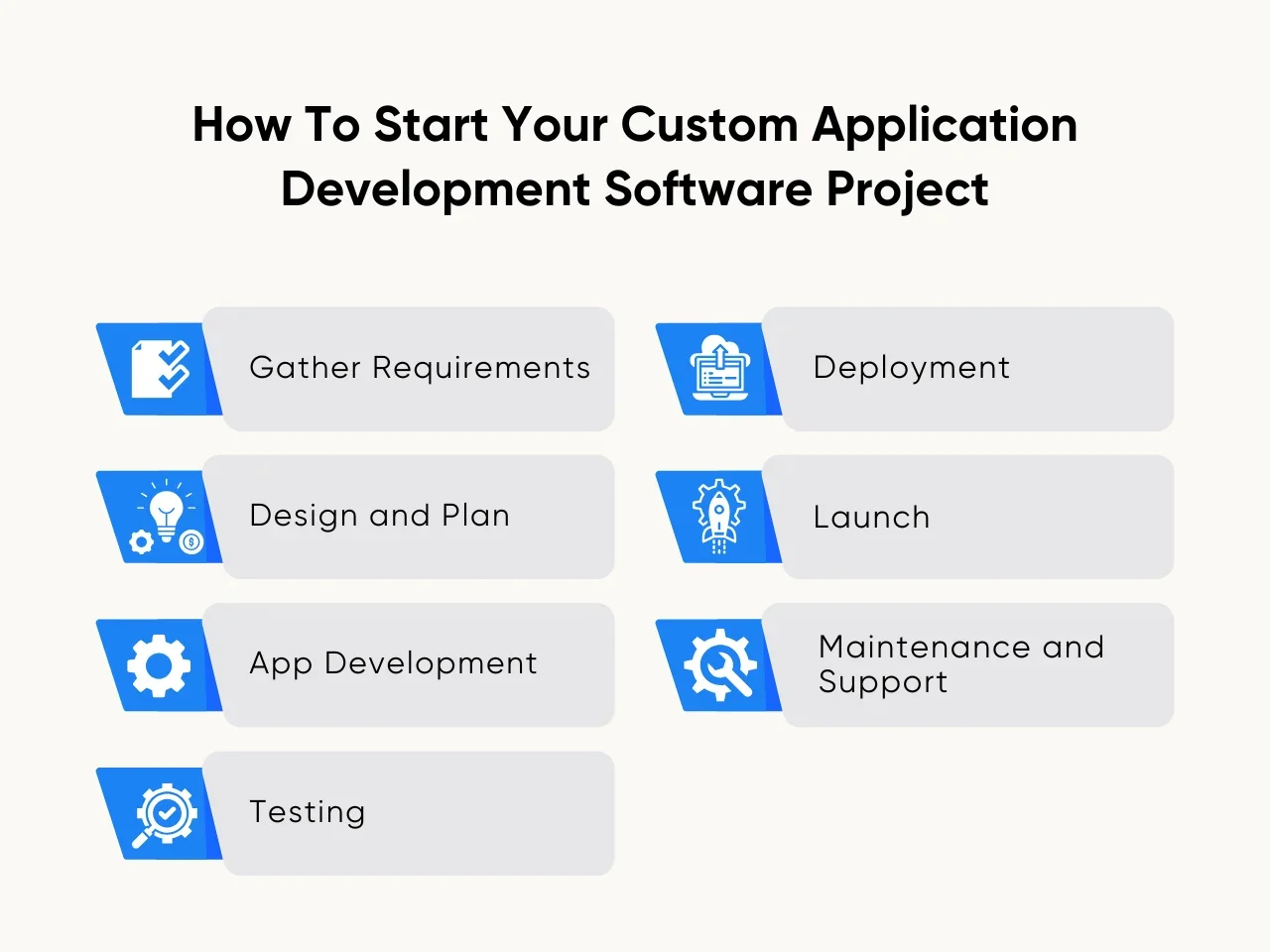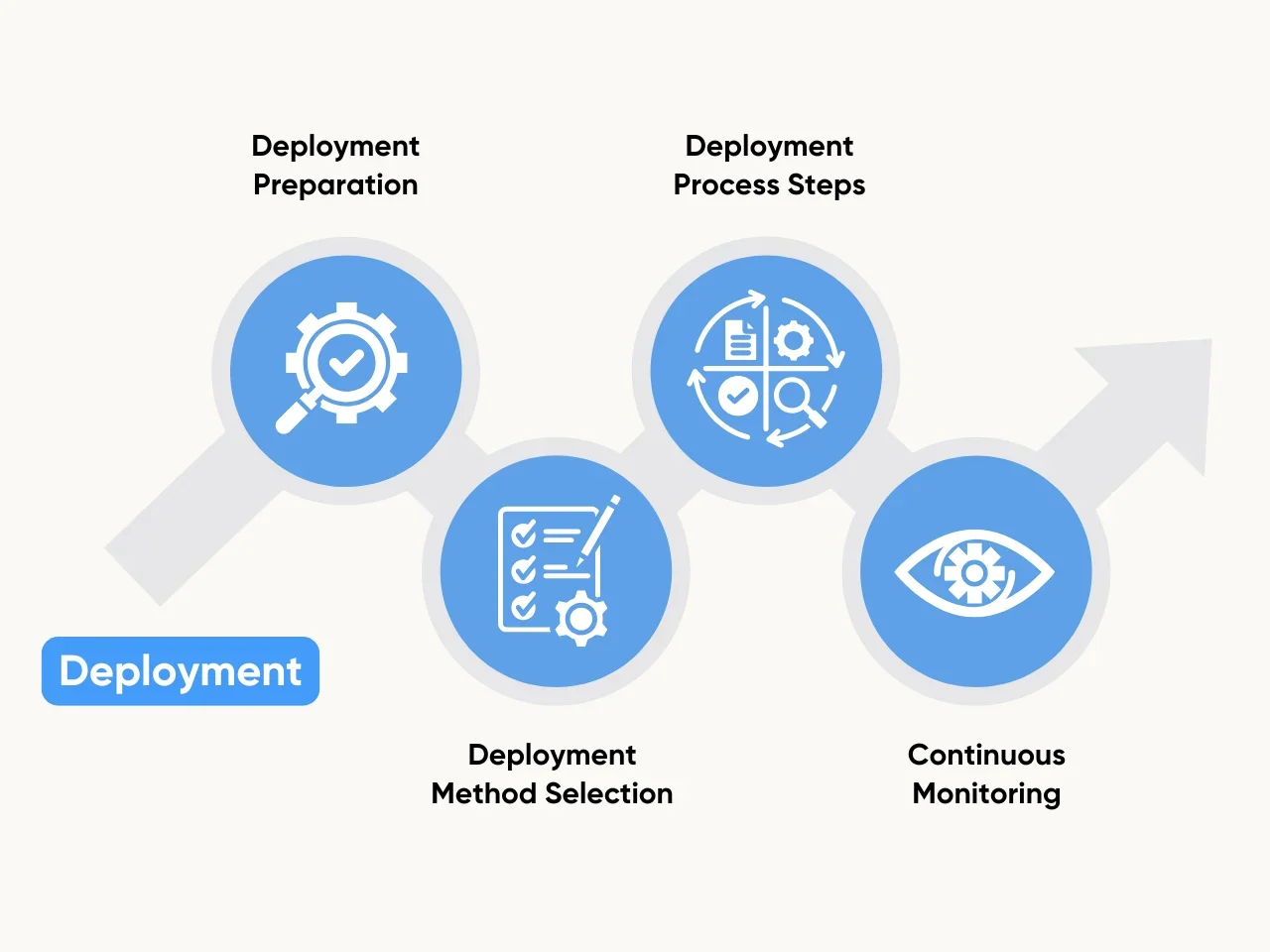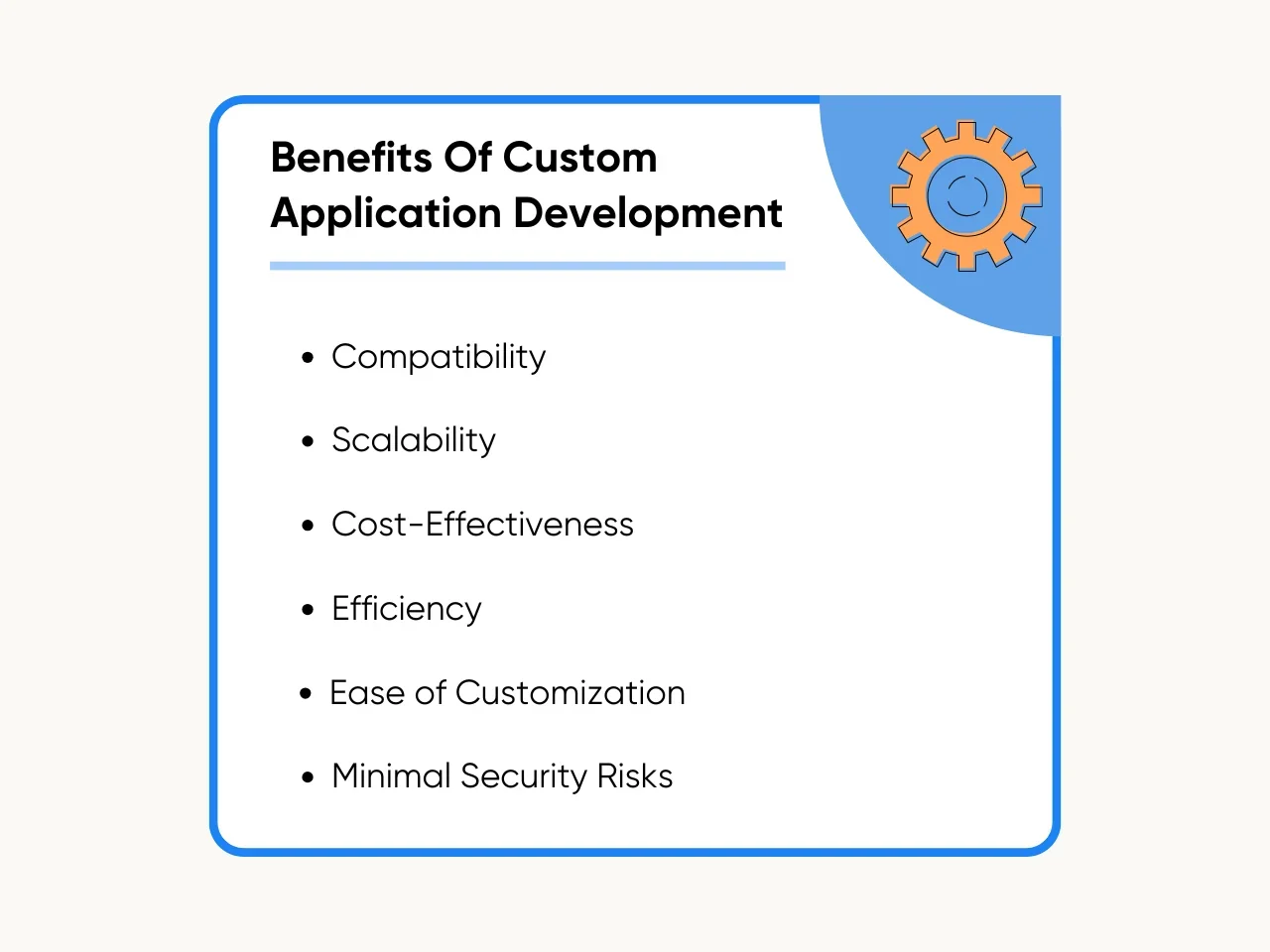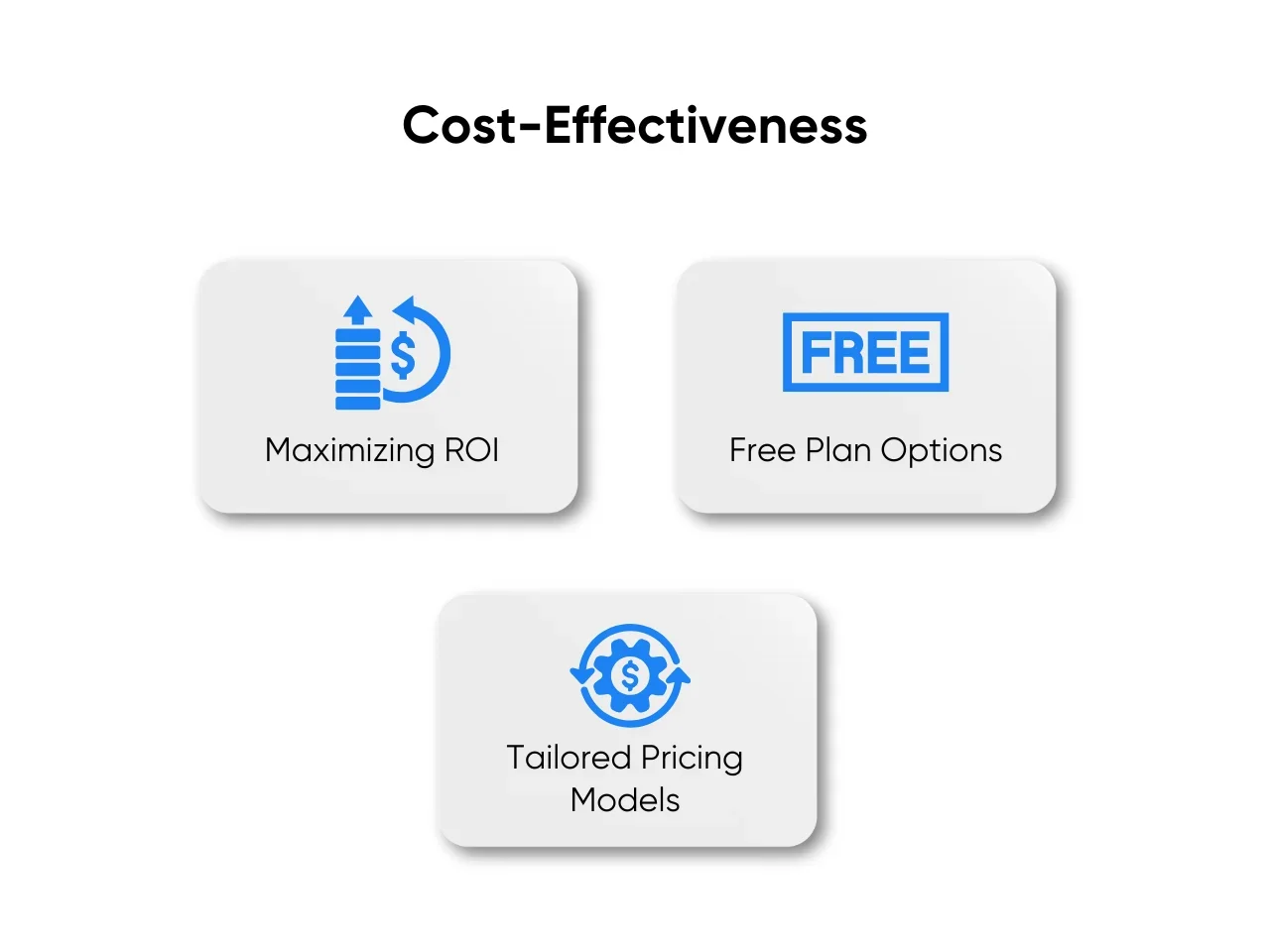Custom application development software plays a vital role for businesses, enabling them to craft tailored solutions that precisely fit their needs. In 2024, generic software applications might fall short of meeting business requirements. Custom application development software steps in as the game-changer, allowing companies to craft applications that perfectly match their distinct needs. Whether it's a web application or a custom mobile app development, this software offers benefits and possibilities tailored to each business's requirements.
Aloa, a reputable expert in software outsourcing, has vetted 10,000+ software agencies around the globe to hire the best custom application developers. Through their rigorous vetting process, they ensure that only the most qualified individuals are presented to you for consideration. Their up-to-date performance reports ensure you receive consistent updates on your custom application development software's progress, allowing you to stay informed and confident with every step.
This A+ guide will explore custom application development software, its importance, and how to start a successful custom application development project. Afterward, you will be well-equipped to start building your software, knowing what features to consider and what to look for in developer teams that you hire.
Let's dive in!
What Is Custom Application Development Software
Custom application development software involves the creation, design, and deployment of software tailored to a business's unique needs. Unlike standard applications, custom ones are built from scratch, ensuring seamless integration with existing systems and enhancing efficiency by automating processes and addressing specific workflows effectively.
Customized to specific needs, bespoke application development software offers more flexibility, scalability, and customization options than ready-made software applications. They are more secure and explicitly built for the organization's use case, improving overall efficiency and productivity..
However, building custom application development software requires significant time and investment compared to ready-made solutions. With its complexity in UX design and software architecture, a team of experienced developers who understand the business's workflows and requirements is imperative.
How To Start Your Custom Application Development Software Project
A meticulous approach is needed when starting a custom application development software project. This approach is essential for successful and efficient custom application development software, from careful planning to rigorous testing. Here are seven steps to guide you in making your project:

Step 1: Gather Requirements
Before beginning the development of a custom application development software, it is essential to define its purpose and align it with specific business goals. Identifying the needs of end-users and stakeholders is equally important, as they shape the functional and technical requirements of the app. Properly documenting and prioritizing these requirements ensures the development process is aligned with business objectives.
Understanding your target audience's needs is critical to developing an app that meets their expectations. You can conduct user research to identify their pain points and preferences, which can guide you in designing a user-friendly interface. It is also important to consider scalability and future-proofing when defining the functional requirements of your app. By anticipating potential changes or updates that may be required, you can ensure that your custom application remains relevant in the long term.
Step 2: Design and Plan
Developing an app with an intuitive layout and user-friendly interface necessitates mapping out the custom application development software's architecture, data flow, and technology stack. It is essential to define the requirements and objectives of the custom application, creating a design plan that includes all necessary features. Identifying the development tools and technology stack required for the project is critical to success.
Visualizing the app's layout and user interface involves considering factors such as screen size, resolution, typography, color schemes, and more. User testing can also provide insights into how users interact with the app's interface. This iterative approach can help identify any potential issues early on and make adjustments to ensure a smooth user experience.
Overall, developing an app with a well-designed layout and user interface requires careful planning, collaboration between stakeholders and developers, continuous refinement throughout the development process, and a focus on meeting users' needs and expectations.
Step 3: App Development
As the custom app development journey moves forward, the focus shifts to the development phase. Coding for front-end and back-end components, integrating APIs, and incorporating new features take center stage. This phase needs critical decisions on methodologies, timelines, and tools, emphasizing effective communication and collaboration. Embracing agile methodologies for flexibility is pivotal, and security measures are paramount. Here are some factors to consider when doing this step:
- Development Phase Focus: After gathering requirements and designing the custom app, the development phase begins with coding for front-end and back-end components. Integration of necessary APIs and adding new features are integral tasks during this stage.
- Critical Aspects: Choosing the appropriate development methodology, establishing timelines, and selecting suitable programming languages and tools are crucial. Effective communication, collaboration within the development team, and regular testing and debugging are essential.
- Agile Methodologies: Agile methodologies are increasingly popular, providing flexibility and adaptability. This approach emphasizes continuous delivery and responsiveness to stakeholder feedback, ensuring on-time and budget-friendly delivery.
- Security Measures: App developers must implement measures to protect user data from potential cyber threats, emphasizing regular security testing and updates.
Step 4: Testing
Testing is a critical step in custom application development software that ensures the quality of the software. After the development phase, rigorous testing is necessary to identify and fix bugs, errors, and usability issues. Various types of tests, such as functional, performance, security, and user acceptance tests, are crucial to ensure that the application meets business requirements.
Using testing tools and automation can improve efficiency and accuracy. Collaboration among developers, testers, and stakeholders throughout the testing process is imperative to achieve a successful outcome. It's also important to note that continuous testing helps detect issues early in the development cycle, reducing overall costs by avoiding costly fixes later. Ultimately, it ensures that all aspects of the software work seamlessly together before release.
Step 5: Deployment
Following the completion of the development and testing phase, the deployment of an application takes center stage. This involves crucial decisions, such as selecting the deployment method (cloud-based or on-premise) and setting up servers and databases. Ensuring system requirements are met, conducting thorough testing, and providing comprehensive documentation are crucial. Let's delve into the pivotal aspects of deploying an application.

- Deployment Preparation: After development and testing, selecting a deployment method and meeting system requirements are paramount. Thorough testing ensures the application functions seamlessly in the deployment environment, and precise documentation is crucial for end-users and support staff.
- Choosing the Right Deployment Method: The complexity of deploying an application depends on factors like scalability, cost-effectiveness, security, and performance requirements. Cloud-based deployment offers flexibility, scalability, reduced costs, and easy maintenance. In contrast, on-premise deployment provides better control over security and data privacy.
- Deployment Process Steps: The deployment process involves various steps, including load balancing configuration, server setup, database setup, software installation, and firewall configuration. Providing proper documentation aids end-users in effective application use and supports staff in troubleshooting.
- Continuous Monitoring: Post-deployment, continuous monitoring is necessary for optimal performance. Early issue identification through monitoring prevents potential problems from escalating, ensuring sustained success for the application.
Step 6: Launch
Begin with a thorough pre-launch checklist, ensuring all features are operational, conducting final tests, and verifying the deployment environment. A well-executed communication strategy is essential – leverage press releases, social media, and targeted emails — to effectively communicate the custom application development software's key features and benefits, generating interest and anticipation.
User training and onboarding also play a critical role in ensuring a smooth introduction for users. Provide accessible training materials like tutorials and guides to facilitate a positive onboarding experience. Implementing a feedback mechanism post-launch is crucial for gathering user insights and helping refine and enhance the application in subsequent updates. Furthermore, setting up monitoring tools and analytics allows you to track the application's performance, user engagement, and scalability, aiding in informed decision-making for future enhancements.
As the application becomes accessible to a broader audience, conducting scalability and performance testing is paramount. This ensures that the application can handle increased traffic and usage seamlessly. Post-launch support is crucial, addressing any immediate issues users may encounter and contributing to a positive user experience. Finally, sustaining marketing efforts post-launch, highlighting positive user feedback, updates, and new features, is crucial for maintaining user engagement and attracting new users.
Step 7: Maintenance and Support
To ensure smooth operations and adaptability with new devices or OS versions, updating and maintaining your custom application development software regularly is crucial. Ongoing support can also enable quick problem resolution and efficient bug fixing, guaranteeing smooth functionality. It is equally important to provide documentation and training for user navigation to ensure ease of use.
One way to secure the longevity and success of your custom application is by selecting a development team that offers continuous maintenance and support services. Regular updates are necessary because technology constantly evolves, and outdated software can quickly become obsolete. Additionally, as new features are added to the device or OS, the app must be updated accordingly, or it may not function correctly. Providing ongoing support helps guarantee that any issues arising from the app's usage will be addressed promptly. A responsive support team can help users troubleshoot problems, ensuring a positive user experience while adapting to new technological changes.
Benefits Of Custom Application Development
Custom application development software enhances business efficiency by tailoring solutions to specific needs, seamlessly integrating into workflows and minimizing errors. Prioritizing security and real-time analytics, these apps require less maintenance and quickly adapt to evolving requirements.
Here are some of the benefits of custom application development:

Compatibility
In business operations, diverse software tools can lead to compatibility challenges. Custom application development steps in as a solution, guaranteeing seamless alignment between the applications created and the tools a company employs. This not only resolves compatibility issues but also heightens overall operational efficiency.
Custom software development extends its impact beyond compatibility, contributing to improved efficiency. Businesses benefit from a streamlined and interconnected system by creating integrated workflows that span multiple applications. This also minimizes the occurrence of user errors, ensuring a smoother and more productive digital landscape for businesses.
Scalability
Scalability is a crucial advantage of custom application development, allowing applications to adapt to evolving business needs and expand flexibly. This capacity permits businesses to augment features and functionality as required, effectively managing growing user demands and data volumes. Custom application development services guarantee that applications seamlessly accommodate increasing requirements and usage, making scalability a valuable asset for businesses searching for adaptable and future-proof software solutions.
The benefits of scalable applications extend beyond adaptability; they enable businesses to sidestep the necessity of rebuilding their entire system from scratch as they outgrow their current setup. This preserves time and resources and facilitates adding new features without disrupting the existing system. Scalable applications are equipped to handle sudden surges in traffic or usage, a crucial attribute for businesses experiencing rapid growth.
Cost-Effectiveness
Custom application development software presents a cost-effective solution for businesses, allowing strategic investment in features that directly impact operations. This approach maximizes Return on Investment (ROI) and introduces various cost-effective avenues. Here are vital points highlighting how custom application development software brings financial benefits to businesses:

- Maximizing Return on Investment (ROI): Pay only for functionalities aligned with specific requirements, ensuring efficient and effective use of invested resources.
- Free Plan Options: Some platforms offer free plans, particularly advantageous for small businesses or startups with limited budgets, allowing them to initiate projects without significant financial commitment.
- Tailored Pricing Models: Custom mobile app development services offer flexible pricing models, empowering businesses to choose features and services that align with their budget and optimize their investments for maximum software solution value.
Efficiency
Custom application development software can significantly improve business efficiency by automating processes and streamlining workflows. Customized applications offer businesses the flexibility to tailor the software to their specific needs, which reduces manual tasks and improves overall productivity. Automation features such as workflows, notifications, and reminders can be implemented to optimize business operations.
Custom application development services focus on efficiency, ensuring that applications deliver value through streamlined deployment, user-friendly interfaces, and optimized workflows. These services offer a range of benefits, such as increased agility, reduced operating costs, improved data security, and enhanced customer experience. Finally, custom applications can give businesses a competitive edge by offering unique capabilities unavailable in off-the-shelf software solutions.
Ease of Customization
One of the most significant advantages of custom application development software is its ease of customization. Unlike off-the-shelf software that may not meet specific business needs, custom applications can be personalized to address specific requirements. They can be modified to adjust functionality, workflows, or user interfaces, offering unparalleled flexibility and adaptability. Custom application development services are designed to deliver tailored solutions, which means businesses can make modifications without disrupting functionality.
This superior level of flexibility enables businesses to seamlessly adapt to changing requirements, industry trends, and customer demands. The ability to customize applications according to their unique requirements gives companies a competitive edge over their rivals. With tailor-made software solutions, businesses can optimize their processes and workflows for maximum efficiency and productivity.
Minimal Security Risks
Custom application development software not only empowers businesses with control over design and functionality but also strongly emphasizes security. From stringent measures against external threats to seamless integration with existing systems, here's how custom applications enhance security and privacy while offering unparalleled customization:
- Security Focus: Prioritizing security, custom development implements stringent measures against external threats, safeguarding sensitive data with regular updates and patches. Adherence to best practices in application security ensures enhanced protection for business operations.
- Complete Control: Businesses choose custom development for design control, taking on added responsibility for application security. Strict security protocols like authentication, authorization, encryption, and intrusion detection mitigate risks associated with customization.
- Integration and Data Privacy: Custom applications seamlessly integrate with existing systems, reducing data breach risks from information silos. In-house development grants businesses control over data privacy policies, allowing compliance with local regulations while maintaining sensitive information control.
Key Takeaway
Custom application development software is a powerful tool to help businesses achieve their unique goals and requirements. It is a valuable investment that can streamline processes, enhance productivity, and drive business growth. Consider investing in custom application development software to take your business to the next level.
With this software, companies can lay easy knowing that efficiency and cost productivity are met through these custom applications. Utilizing these custom application developments gives businesses the upper hand in their industry competition. While it may seem overwhelming for startups, partnering with outsourcing firms can help to manage these applications effectively. Ready to build your custom application development software?
Contact our Account Executives at [email protected] to learn more about custom application development software. You can also explore our blog on custom software to stay updated on the latest insights and trends that impact various development softwares today.

